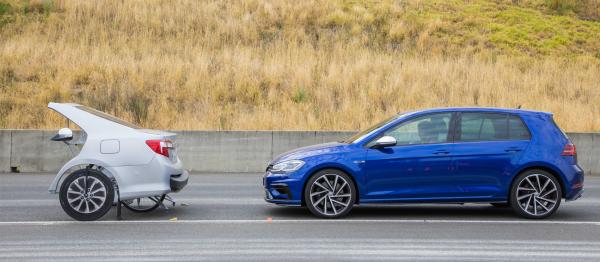
Heard of a hail cannon?
Environmental science has never been a hotter topic than it is right now, with Australia hosting some of the most extreme weather events ever recorded occurring in the last 20 years alone.
One such event was the infamous hailstorm of 1999 which pelted Sydney and the east coast of NSW with an estimated 500,000 tonnes of hailstones, causing extensive damage and becoming Australia’s costliest natural disasterin insurance history. More recently, NRMA Insurance has handled 31,505 hail claims to date since January 2019 – and forecasters predict this number to rise year-on-year with the ever-increasing frequency of severe weather events.
So, it’s little wonder that IAG, Australia’s largest insurance group takes the threat, as well as the science, of hail seriously. The IAG Research Centre has been researching hail damage for over 10 years, working with specialist meteorologists and an extended network of environmental and weather research centres around Australia.
Following the 1999 storm, the Centre worked closely with experienced engineers and by 2004 had created and built specialist test equipment to help researchers investigate the damage caused to new and old roofing tiles (concrete, terracotta and slate) and other roofing materials including corrugated steel, solar panels and plastic membrane coverings. To do this, they needed to emulate the velocity – and ferocity – of hail.
Building a hailstorm
In order to test the effects of hail, you need to recreate the cause – fast moving ice at the moment of impact. With this in mind, the Research Centre created a hail cannon that fires balls of ice at specific speeds. “The purpose of making a hail cannon was to replicate the effects of hail on roofing products to understand the amount of damage done,” says James Thomson who heads up the IAG Research Centre. “It allows us to learn how materials break, so that we can better understand the damage to houses that can occur in a hailstorm.”
The first hail cannon built was more of a slingshot concept that used spearfishing equipment to replicate hail damage. The next iteration was to improve power and repeatability with compressed air and digitally controlled pressures. The newest version is a leap forward again, bringing improved accuracy of all testing parameters utilising electronically controlled air release and pressure adjustment.
Handle with care
When you consider that a hail cannon is specifically designed to fire high-velocity projectiles at various materials, it’s no wonder safety is paramount. The cannon uses multiple safety systems including arming keys, cut-off switches and operation protocols to ensure the team’s safety. The Research Centre has a dedicated testing space with a bulletproof safety panel that separates the test pieces from the operators and the cannon is controlled externally using an electronics panel.
Compressed air is fed into a collection tank and ‘dumped’ rapidly through several valves to deliver as much air as possible, which in turn accelerates the replicate hail stones down the barrel towards whichever material is being testing.
Test materials are mounted on a specially designed impact panel that can take roof panels, vehicle parts or, in the near future, hail blankets – but more about that later.
Of course, you can’t test the impact of hail without hailstones, so the Research Centre manufactures them in specially designed moulds made from high-strength plastic. The moulds are filled with regular tap water then frozen overnight. The size and shape of these hailstones is controlled and carefully designed to match the impact energy of hailstones seen in actual events. Hailstones are made in six different sizes and are fired at corresponding speeds to match the impact energy of real hail stones.
Investigating the types of hail damage
More than just testing the damage to building materials, the hail cannon is also an incredibly useful tool to help researchers understand the damage hail does to vehicles. In fact, it has already been used to extensively test vehicle panels to help fraud investigators understand hail impact patterns and damage.
So, what’s next for the hail cannon? “Next is to test a range of hail blankets to see what effects they have on reducing or preventing hail impact damage” says James. “The aim is to gain an understanding of these products’ abilities so we can better educate our customers and the public on their usefulness.”
Watch this space and we’ll bring you the rundown once the results are in. But in the meantime, as storm season approaches make sure you have a hail plan for your vehicle and check that your comprehensive car insurance is up to date. If hail is forecast, park your vehicle in a garage or an undercover carpark if you have time. If you can’t find shelter for your car, you can try covering it with heavy blankets or a quilt for protection but do this before it starts to hail. Your safety is more important.
If your car is damaged in a hailstorm and you need to make a claim, NRMA Insurance has many kinds of emergency support to offer you. Call anytime on 131 123 to make a claim or to discuss the help you need, 24 hours a day, seven days a week.



